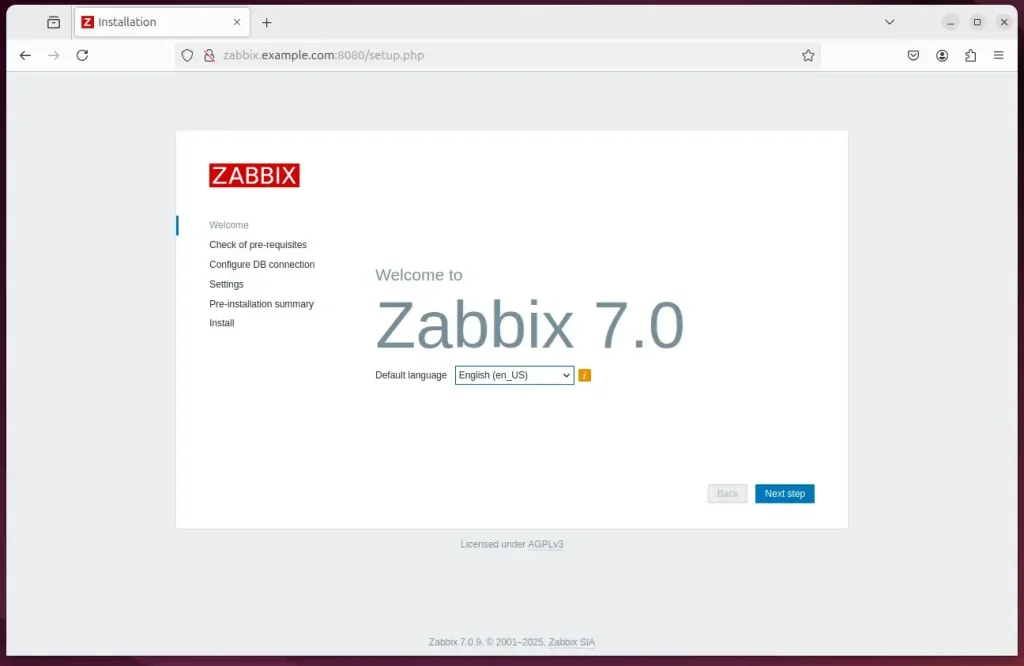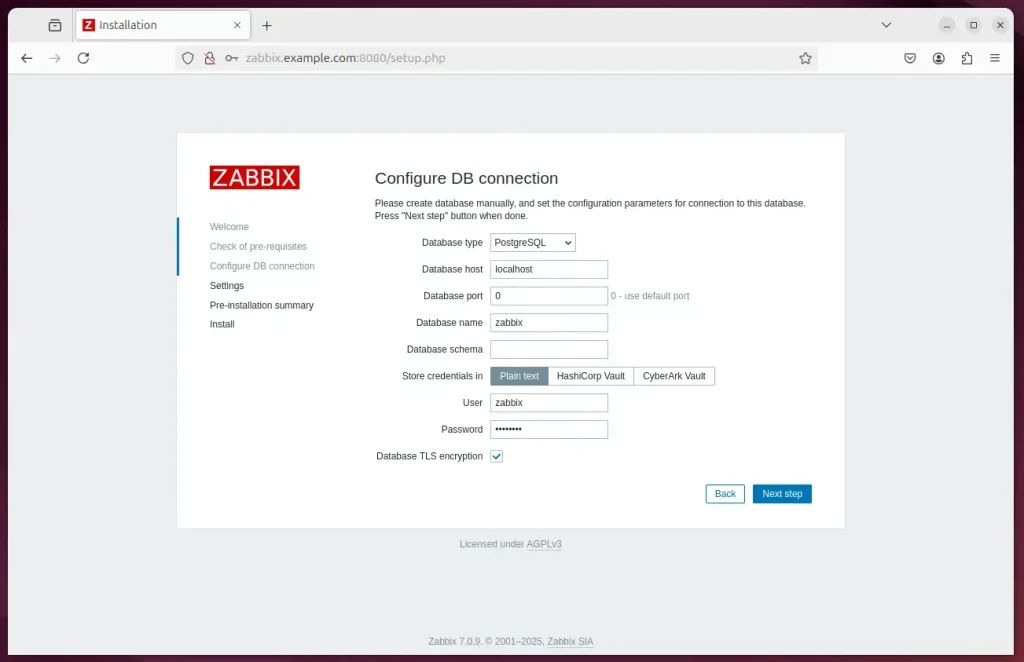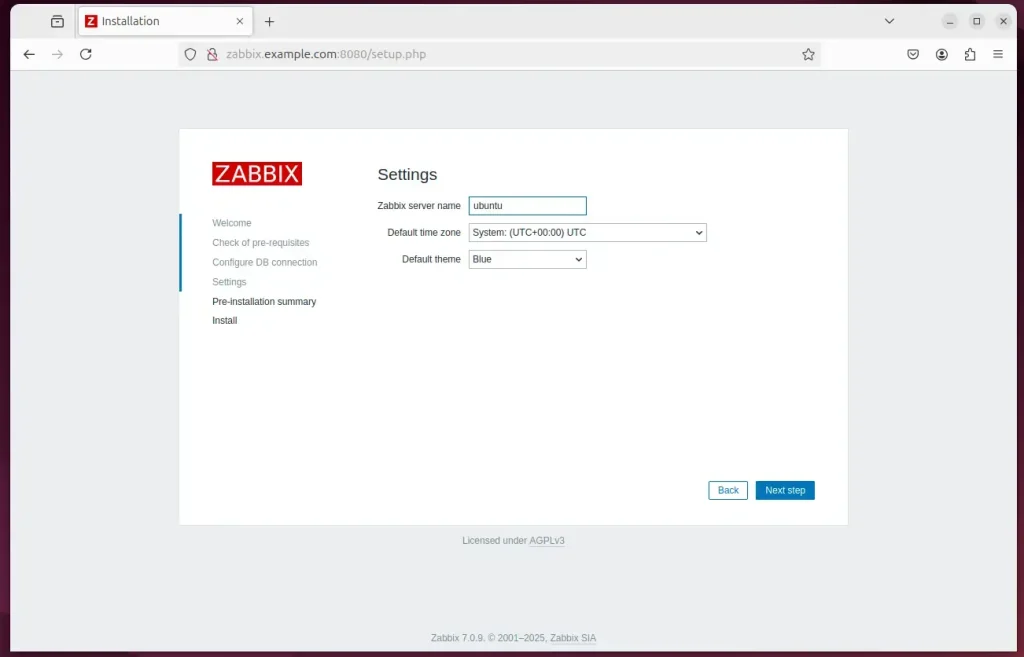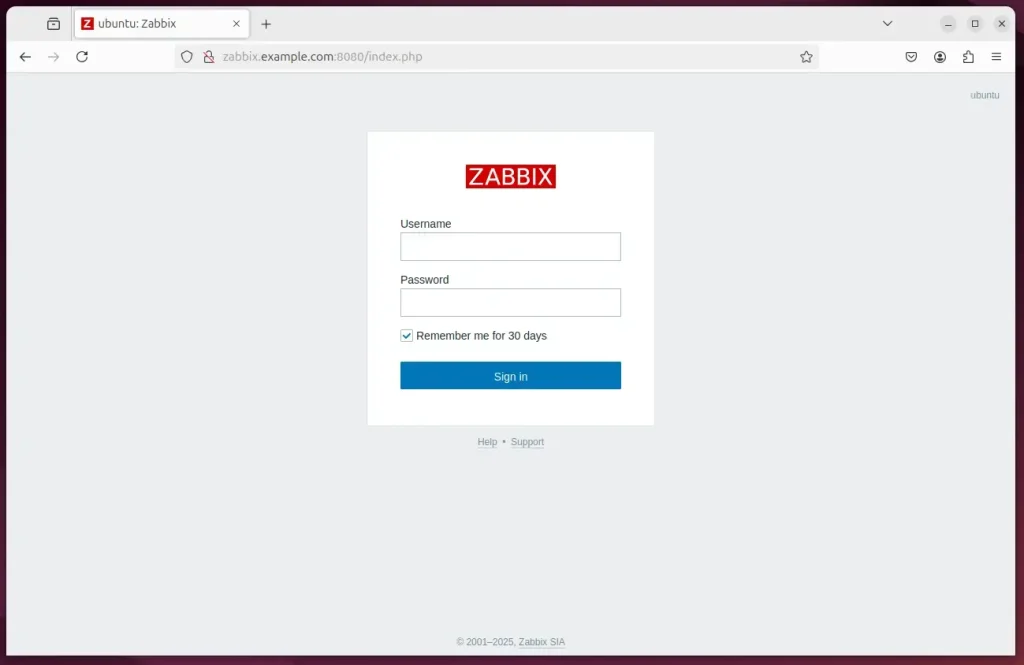This article explains how to install Zabbix with Nginx support on Ubuntu 24.04.
Zabbix is an open-source monitoring solution designed to track and monitor the status of various network services, servers, and hardware.
Nginx is known for its high performance and low resource consumption, making it an excellent choice for handling web applications like Zabbix, especially under heavy loads.
Using Nginx with Zabbix on Ubuntu can significantly improve performance, provide better security, and make managing your monitoring solution easier, exciting IT professionals about the potential enhancements in their IT infrastructure.
Install PostgreSQL server
Zabbix uses databases to store its content and supports SQL databases like MySQL and PostgreSQL.
For this post, we’re going to be using the PostgreSQL database to use with Zabbix.
Run the command below to install PostgreSQL.
sudo apt update
sudo apt install postgresql postgresql-contrib
After the installation, run the command below to enable PostgreSQL services to start up automatically and check the PostgreSQL service status.
sudo systemctl is-enabled postgresql
sudo systemctl status postgresql
Please read the post below for more information about installing PostgreSQL and using it on Ubuntu.
How to install PostgreSQL on Ubuntu
Install Zabbix packages
With Nginx support, you must install some required packages to install Zabbix on Ubuntu.
First, download and install the Zabbix repository for Ubuntu by running the command below.
wget https://repo.zabbix.com/zabbix/7.0/ubuntu/pool/main/z/zabbix-release/zabbix-release_latest+ubuntu24.04_all.deb
Next, run the command below to install the Zabbix repository.
sudo dpkg -i zabbix-release_latest+ubuntu24.04_all.deb
After adding a new repository, you must refresh your package index by running the command below.
sudo apt update
With the Zabbix repository installed on Ubuntu, you can run the command below to install these packages from the repository.
sudo apt install zabbix-server-pgsql zabbix-frontend-php php8.3-pgsql zabbix-nginx-conf zabbix-sql-scripts zabbix-agent
With this command, you’ll install the following packages:
- Zabbix with PostgreSQL database support
- Zabbix web application or frontend
- PHP and modules, including the ‘pgsql’ module for the PostgreSQL driver
- Nginx and configuration for Zabbix
- Zabbix SQL scripts
- Zabbix agent for monitoring the Zabbix system
Configure Zabbix
With all the packages to support Zabbix installed, you can continue configuring the Zabbix environment.
First, create a new database and account to use with Zabbix.
Run the two commands below to create a new PostgreSQL user and database called ‘zabbix‘.
When prompted, create a password for the account.
sudo -u postgres createuser --pwprompt zabbix
sudo -u postgres createdb -O zabbix zabbix
After creating the database and user, run the following command to import the database schema to the database created.
Confirm the password created above.
zcat /usr/share/zabbix-sql-scripts/postgresql/server.sql.gz | sudo -u zabbix psql zabbix
You’ll see a success message if everything works.
Next, run the command below to open Zabbix configuration ‘/etc/zabbix/zabbix_server.conf‘.
sudo nano /etc/zabbix/zabbix_server.conf
Change the default configuration of ‘DBName‘, ‘DBUser‘, and ‘DBPassword‘ with your PostgreSQL database details.
### Option: DBName
# Database Name
# Mandatory: yes
# Default:
# DBName=
DBName=zabbix
### Option: DBUser
#Database user.
# Mandatory: no
# Default:
# DBUser=
DBUser=zabbix
### Option: DBPassword
#Database password.
# Mandatory: no
# Default:
DBPassword=Type_DBuser_password
Save the file and exit the editor when finished.
Set up Nginx
After setting up the Zabbix database configuration, continue with setting up Nginx.
Run the command below to open the Nginx configuration for Zabbix ‘/etc/zabbix/nginx.conf‘.
sudo nano /etc/zabbix/nginx.conf
Change the highlighted lines to match the ones below.
server {
listen 8080;
server_name zabbix.example.com;
root /usr/share/zabbix;
index index.php;
............................................
When done, save the file and exit the editor.
Restart Zabbix services
PostgreSQL and Nginx should be configured and ready. However, you must restart Zabbix services.
Run the commands below to restart the services.
sudo systemctl restart zabbix-server zabbix-agent nginx php8.3-fpm
sudo systemctl enable zabbix-server zabbix-agent nginx php8.3-fpm
You can check the status when the services are restarted by running the command below.
sudo systemctl status zabbix-server zabbix-agent nginx php8.3-fpm
Access Zabbix
Zabbix services should be configured and running. Now, open your browser and browse to the server’s hostname to access the installation wizard.
http://zabbix.example.com:8080
Select the installation language and continue.

Configure the database

Type in the server name and continue.

Zabbix should be installed and ready to use.
Enter the default account below and sign in.
- Username: Admin
- Password zabbix

That should do it!
Conclusion:
Installing Zabbix with Nginx support on Ubuntu 24.04 is a straightforward process that significantly enhances monitoring capabilities. Key takeaways include:
- Comprehensive Monitoring: Zabbix offers robust monitoring for various network services, servers, and hardware.
- Enhanced Performance: Utilizing Nginx allows for high performance and low resource consumption, which is beneficial for handling large traffic volumes.
- Database Flexibility: PostgreSQL is reliable for Zabbix, ensuring efficient data management and storage.
- User-Friendly Interface: The web front of Zabbix makes it accessible and easy to configure.
- Security Improvements: Nginx contributes to better security measures when managing the Zabbix environment.
- Community Support: As an open-source solution, Zabbix has strong community backing, providing abundant resources and documentation.
Following the outlined steps, you can set up a robust monitoring solution tailored to your IT infrastructure needs.

Leave a Reply